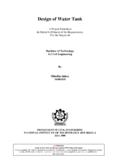Transcription of Dekton Technical Manual - Cosentino
1 Technical MANUALA product designed byINDEX PRODUCT DEFINITION 01 Technical CHARACTERISTICS 02 QUALITY STANDARDS 03 PRODUCT CERTIFICATION 04 HANDLING AND STORAGE 05 CUT-TO-SIZE PIECES, INSTALLATION AND ASSEMBLY 06 WORKTOPS. JOINTS BETWEEN PIECES AND INSTALLATION OF BACKSPLASHES 07 INSTALLATION AS FLOORING 08 MAINTENANCE AND CLEANING 09 OCCUPATIONAL HEALTH AND SAFETY 10 PRODUCT DEFINITION 01 Dekton by Cosentino Manufacturing ProcessFor 6 years, Cosentino Research & Development, has been working on the development of a new large format product with unique properties. This product consists of a mixture of raw materials that react to high temperatures to obtain a slab with unique Technical and aesthetic product s patent was requested in 2012 and currently a PCT patent has been requested.
2 The trade name of the product is Dekton by Cosentino , although it may have different brands depending on the final application. Owing to its properties, Dekton is a unique material around the world, as it boasts the highest quality Technical characteristics among the different existing construction surfaces on the market. The factory as a unit includes several phases. Each phase is different depending on the type of product that it is capable of developing. The manufacturing process is explained below from the first manufacturing phase consists of the following sections:Receipt and preparation of raw material: begin the very start of the process, the raw materials are checked for quality and suitability.
3 All raw materials are stored separately to prevent cross-contamination. The raw materials are transported by a conveyor belt system, from the storage areas to a series of hoppers or purification systems exclusively designed for this raw materials used for Dekton have been very carefully chosen, paying particular attention to the physical and chemical parameters. They are supplied from all around the world and in some cases, demand a complex logistics system to prevent contamination or loss in and homogenization: the Dekton formula is transported from the hoppers or purification systems to a wet grinding process, in which, the different raw materials are mixed in a certain ratio and are ground to a specific particle size.
4 The particle size completely determines the speed and course of the chemical reaction that gives rise to Dekton . It also conditions the final properties of the product. This mixture is stored separately before use, following a pre-determined stabilisation period. Pigmentation: the pigmentation process is made up of a complex system of mixers, diluters and stirrers. This system is capable of mixing, depending on the colour/ finish, inorganic pigments with the rest of the Dekton formula. These pigments also form part of the chemical reaction that gives rise to Dekton , thus the quality control of its chemical composition is thorough and rigorous.
5 Atomisation: The already coloured Dekton formula is dried by atomisation until a specific size, grain form and a specific humidity are achieved. The different powder products obtained are stored in separate silos. In this case, the humidity controls the fluidity of these small particles, allowing them to be deposited in the different receptacles that supply some of the subsequent decoration systems. They flow between the channels that supply the other decoration systems or that allow their movement during mixing systems. Decoration systems:using several unique mechanisms for their design and function, these small particles generated in the previous section, are carefully positioned on different locations on a belt, creating a continuous slab.
6 The decoration mechanisms are what create the different aesthetic effects. These effects can be produced throughout the thickness of the slab or just on the surface. In total, and in the first phase of the production process, there are 16 different decorative systems that can work independently or simultaneously, or even in groups, resulting in an incredible design versatility. Shaping system: the continuous slab is separated into several sections that later will create the finished slab, and that will be subject to an extreme ultra-compaction process. To do so, a unique press worldwide has been designed for its special dimensions and its capacity to process gives the slabs sufficient mechanical resistance to be able to move onto the next section, which is the final thermal process.
7 Before reaching this last section, the ultra-compact slabs pass through different intermediary steps to assist the following steps or to include the aesthetic/decorative content of the piece in some process: during this process, the finished slab is given its final physical, chemical and aesthetic properties. This process includes the application of high temperatures so that the different coloured particles react following a pre-established reaction this process, the raw material and initial pigments are transformed into several intermediary composites. These composites, through the application of heat, are controlled so that they react and so that they can follow the correct synthesis end result is Dekton with a useful surface of approximately 3200 mm long and 1440 mm wide and a thickness that can vary between 8 and 30 mm depending on the and storage:Warehouse manufacturing process is the classification and storage of slabs.
8 They are classified horizontally in an automatic the last step of the Chemical CompositionThis product does not contain resins or organic additives and therefore polymerisation reactions are not used for its production. The chemical composition of the product is fully inorganic. Different formulas are used for Dekton , depending on the type of product required; this means that the final chemical composition can fluctuate without the physical or chemical properties being example of the final chemical composition of Dekton is as follows: aluminium silicates, amorphous silica, crystalline silica, zircon and inorganic pigments.
9 The content of crystalline silica in all colours and formula will always be below 11% in product is classified with the TARIC tariff code: in accordance with its Technical characteristics, it complies with group BIaof standard EN 14411:2006, such as tiles both for indoor and outdoor flooring From the outset, Dekton has been designed so that it can be used on practically all existing construction sur-face applications. Currently its main characteristics are as follows, although new generations of Dekton that are being developed will allow its use in other more spe-cialised Technical applications. High resistance to hydrolysisHigh resistance to abrupt temperature changesHigh resistance to freezingHigh resistance to abrasion and wear and tearFlexural strengthExtreme resistance to compressionResistance to contact with hot objectsResistance to UV ray exposure (possibility of application outdoors)
10 Resistance to chemical products and almost entire pH rangeLow thermal dilationNon-combustibleOptimal thermal insulationPossibility of cut-to-size productsPossibility of studying different thicknesses and formatsdepending on the applicationTECHNICAL CHARACTERISTICS 02 Technical characteristics according to other standardTESTSTANDARDDETERMiNATiONUnitsFa mily iFamily iiFamily iiiFlexural and bending strengthUNE EN iSO 10545-4 Average flexural strengthN/mm2606759 Average bending bending absorption, open porosity and densitiesUNE EN iSO 10545-3 Boiled water absorption%00,10,1 Vacuum water absorption%0,10,10,1 Open porosity%0,20,20,2 Apparent relative densityg/cm32,512,612,53 Apparent densityg/cm32,502,612,52 Resistance to deep abrasionUNE EN iSO 10545-6 Abrasive volumemm3125106115 Determination of dimensions and surface aspectUNE EN iSO 10545-2 Length and width*% 0,6% ( 2 mm) 0,6% ( 2 mm) 0,6% ( 2 mm)Thickness*% 5% ( 0,5 mm) 5% ( 0,5 mm) 5% ( 0,5 mm)Straightness of sides*% 0,5% ( 2 mm) 0,5% ( 2 mm) 0,5% ( 2 mm)Rectangularity*% 0,5% ( 2 mm) 0,5% ( 2 mm) 0,5% ( 2 mm)Central curvature*% 0,5% ( 2 mm) 0,5% ( 2 mm) 0,5% ( 2 mm)Lateral curvature*% 0,5% ( 2 mm) 0,5% ( 2 mm) 0,5% ( 2 mm)Warping*% 0,5% ( 2 mm) 0,5% ( 2 mm) 0,5% ( 2 mm)Surface appearance (Undamaged tiles)










